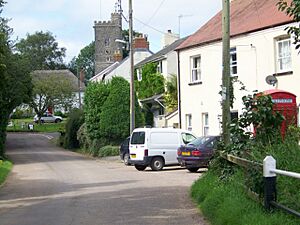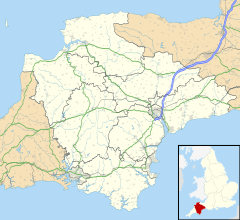Payhembury facts for kids
Quick facts for kids Payhembury |
|
|---|---|
 Village of Payhembury |
|
| Population | 790 (2021) |
| Civil parish |
|
| District |
|
| Shire county | |
| Region | |
| Country | England |
| Sovereign state | United Kingdom |
| Post town | Honiton |
| Postcode district | EX14 |
| Police | Devon and Cornwall |
| Fire | Devon and Somerset |
| Ambulance | South Western |
| EU Parliament | South West England |
| UK Parliament |
|
Payhembury is a friendly village in the East Devon area of Devon, England. It is also a 'civil parish,' which is a local area with its own council. This council helps manage things like local parks and services for the community.
About Payhembury
Payhembury is located about six miles west of a town called Honiton. In 2021, about 790 people lived in the parish. It is surrounded by other parishes like Broadhembury, Awliscombe, Buckerell, Feniton, Talaton, Clyst Hydon, and Plymtree.
What is a Hamlet?
The Payhembury parish also includes several smaller communities. These are called hamlets. Hamlets are usually tiny settlements, even smaller than villages. In Payhembury, these hamlets include Colestocks, Lower Cheriton, Tale, and Upton.
St. Mary's Church
The main church in Payhembury is called St. Mary's. Most of the church was built a long time ago, in the 1400s. It has some interesting features inside.
One special part is a stone archway, or "arcade," made from Beer Stone. This is a type of limestone found nearby in Devon. The arcade has carvings of shields, including the symbols of the House of Courtenay. The Courtenays were a very important and powerful family in Devon's history.
The church also has a beautifully coloured roof. You can also see the altar rails from the time of Queen Anne. She was the Queen of Great Britain and Ireland in the early 1700s.


